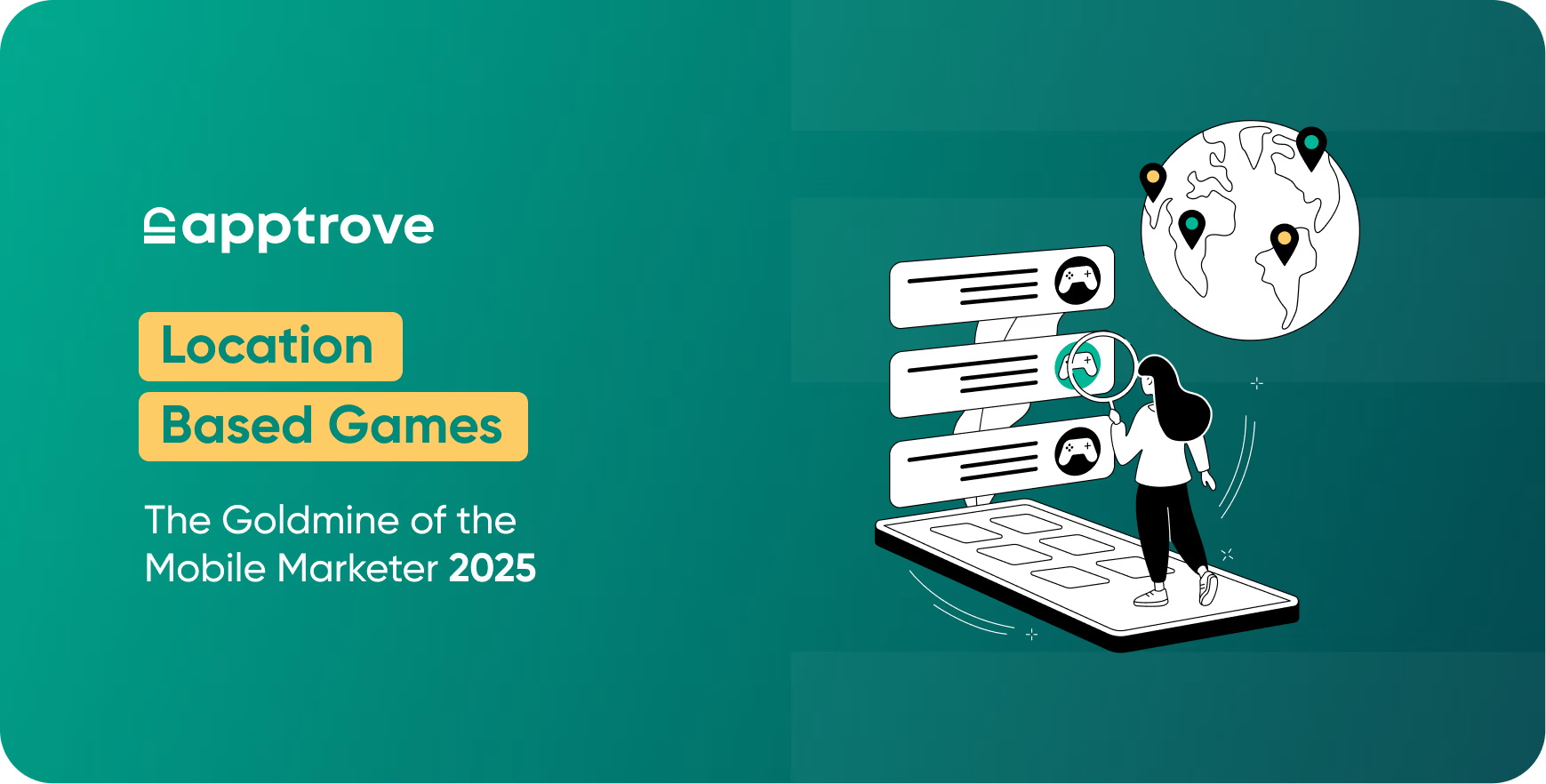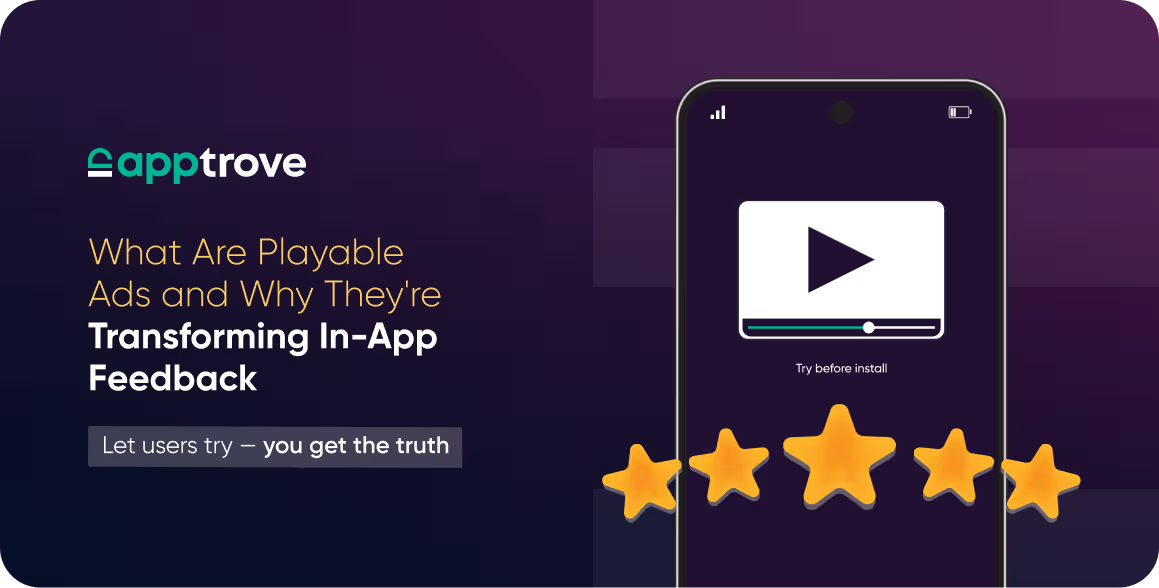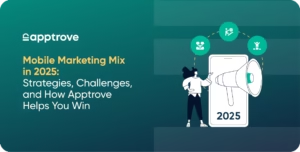Marketers have always found rich soil in the field of gaming. However, the way marketers connect with the audiences is being reversed with location based games, and that too in a digital-physical thin-line. In fact, nearly 90% of marketers report positive results from location-based marketing, showing measurable gains in engagement, foot traffic, and ROI.
GPS and real-time location data are the facilitative keystones of these types of games, catapulting them to a new format of hyper-contextual mobile marketing altogether. In the landscape of 2025 – where privacy-first meets immersion, location-based mobile games continue to be a growing unknowable for smart app marketers. What we do at Apptrove, as a mobile measurement partner, is help marketers to better understand and unlock the true value of location-based campaigns through accurate geo-segmentation, real-time attribution, and contextual targeting.
Whether it’s optimizing in-game engagements or tracking in-app offline conversions, Apptrove provides the quality and control to scale what is proven to work. In this blog, we will unbox the evolution of location-based gameplay, why it is one of the vital components of the marketing ecosystem, and what the popular location-based games tell us about how to attract users today.
What are Location Based Games in Marketing?
Location based games are more than gameplay to marketers, it is audience context. Such mobile applications integrate location information with AR, engagement, and real-time data to modify behavior within the app and in the real world.
Location-based mobile games, unlike the static apps, react to the position of the users. This makes an effective situation in which to:
- Offer in-game advertisements based on real-life places
- Use more contextual data to improve segmentation
- Facilitate user interactions through proximity and movement by enabling user journeys to be dynamic
Ensuring message alignment, offers and interaction is also possible, based on real life triggering, something most mobile verticals could only dream about.
Why Location Based Mobile Games Are a Marketer’s Playground
Let’s break down the marketing potential.

1. Hyperlocal Targeting
Raw intent signals, as generated by location based mobile games, are made available to the marketer, unlike with the traditional forms of gaming, where user behavior is restricted to in-app logic. Conducting a campaign around malls, cafes, or event spaces? These games allow you to geo-fence the promotions to the active players in the vicinity.
2. Retention Through Movement
The idea of the game stays involved with movement, which promotes repetition. Players must leave and play, move around, and come back. This naturally enhances app stickiness the retention marketing teams dream about.
3. Real-Time Contextual Offers
Picture yourself buying a discount in the local coffee shop and getting an in-game badge. Location based game mechanics allow marketers to integrate real world visit rewards into the game with no additional effort to build a novel type of gamified commerce.
4. User-Generated Amplification
Players are fond inventing in-game accolades and real life explorations. That produces free UGC, widens organic reach and spikes your virality loop.
Monetization Angle for Marketers and Developers
Here’s where the numbers matter. Location based games offer multiple revenue paths:

1. Ad Monetization
Display programmatic advertisement based on movement, zones or location history. Increase eCPMs by delivering hyper-relevant ads based on real-world user behavior.
2. In-App Purchases (IAPs)
Gamify item unlocks based on location challenges. Drive microtransactions through location-exclusive rewards and time-bound offers.
3. Brand Partnerships
Co-create events, quests, or rewards tied to physical venues. Boost user engagement and footfall by integrating branded experiences into gameplay.
4. Contextual Offers
Push deals from local merchants, enhancing ARPU and session depth. Provide time-sensitive promotions to act when users are the most inclined.
By having the right mobile measurement partner such as Apptrove, you will be able to assign revenue to specific campaigns, location, and user behavior.
Why App Marketers Need a Location-Aware Analytics Stack
Paid UA or retention campaigns? That is, paid traffic to a location based mobile game? Well, then you better stop thinking in terms of conventional metrics.
You’ll need:
1. Geo-funnel Analysis
Understand where high-value users are coming from. Find the sites in various areas where people drop off and fix conversion tour with them.
2. Behavioral Cohorting by Location
Are urban players operating differently to rural? Use location-based insights to tailor in-game experiences and offers for each cohort.
3. Real-Time Event Tracking
Track the engagement of the certain zones or regions. Record live user behavior in order to serve an immediate reaction using localized campaigns or rewards.
4. Precised Attribution
Learn how conversion includes push, an advertisement, and a walk-in store visit.Obtain a single view of cross-channel interactions so that marketing decisions can be made more intelligently.
This is where Apptrove becomes your essential growth partner. We specialize in hyper-contextual, location-aware analytics, campaign optimization, and performance insights built specifically for app marketers.
Campaign Ideas for Marketers in Location Based Games
Want to try something fresh? Here are some geo-driven campaign ideas:
Citywide In-Game Tournaments
Attach rewards to a weekly activity within an app in a focused place. Make city-specific leaderboards to create local competition and boasting rights.
Real World Quests with Brand Rewards
Associate with local coffee shops or shops in the form of treasure hunts. Encourage foot traffic and increase brand affinity by real-world value.
Push Notifications on Arrival
When people are in any area, deliver to them a unique mission or proposal. Deliver immediate re-engagement using hyper-contextual triggers, which seem personal.
Geo-locked Exclusive Items
Support investigation that requires selective guarding of aspects of the game. Induce an FOMO, movement and session spikes by using scarcity and location.
Such standards optimize play and provide measurable ROI to marketing departments. What the current users desire is the combination of the real world touch and digital interaction.
Safety, Compliance, and Privacy
Responsibility is not an option when it comes to location data marketing. Consumers nowadays are more conscious and defensive, about their data. This implies that marketers should be in compliance with privacy regulations such as GDPR and CCPA, create transparency, which is a form of trust building.
Here’s what to get right:
- Clear opt-in: Users should know exactly when and why their GPS is being used.
- Transparent usage: Clearly explain how location data supports the user experience.
- Compliant tools: Your attribution and analytics must respect local data laws.
Privacy is not only legal, but it is strategic. When you have Apptrove, your geo-campaigns remain compliant, transparent, and high-performing, but without compromising on cut corners.
Location Based Games Deserve a Place in Your 2025 Marketing Plan
Due to the increasing level of fractured attention and the widespread acceptance of privacy as a rule, the option of location based games proves to be engaging, restrained and innovative ways to mature. They enable you to connect with people not only on the IT screens, but also in their streets, neighborhoods, and everyday lives.
In case you are serious about mobile engagement, retention and monetization- location based mobile games are not a novelty anymore. They are a strategic medium. Real-world relevance in 2025 will reward marketers and this is your opportunity to lead.

FAQs
1. What are the benefits of using location-based games in mobile marketing?
Location-based games offer marketers the ability to connect with users through real-world engagement, hyperlocal targeting, and contextual offers. These campaigns drive measurable improvements in engagement, foot traffic, and ROI by turning player movement and proximity into meaningful marketing moments.
2. How does Apptrove enhance location-based marketing campaigns?
Apptrove empowers marketers to get the most out of location-based games with real-time attribution, geo-funnel analysis, behavioral cohorting, and contextual targeting. By offering precise insights and user segmentation based on live location data, Apptrove helps scale high-performing strategies while keeping privacy in check.
3. What kind of monetization models work with location-based games?
Marketers and developers can monetize through hyper-relevant in-app ads, location-triggered in-app purchases, brand-sponsored real-world quests, and local merchant promotions. Apptrove helps attribute revenue back to specific campaigns, ensuring you know what drives performance.
4. Are location-based games compliant with privacy regulations?
Yes, when implemented responsibly. With clear opt-ins, transparent data usage, and tools that align with GDPR and CCPA, location-based games can be both effective and ethical. Apptrove ensures your geo-campaigns stay compliant without sacrificing performance.
5. How can marketers track the effectiveness of location-driven campaigns?
Marketers need tools that go beyond standard KPIs, like geo-funnel drop-off analysis, location-based user cohorts, real-time event tracking, and cross-channel attribution. Apptrove’s analytics stack is built specifically to measure, optimize, and report on location-based user behavior in a privacy-first world.






